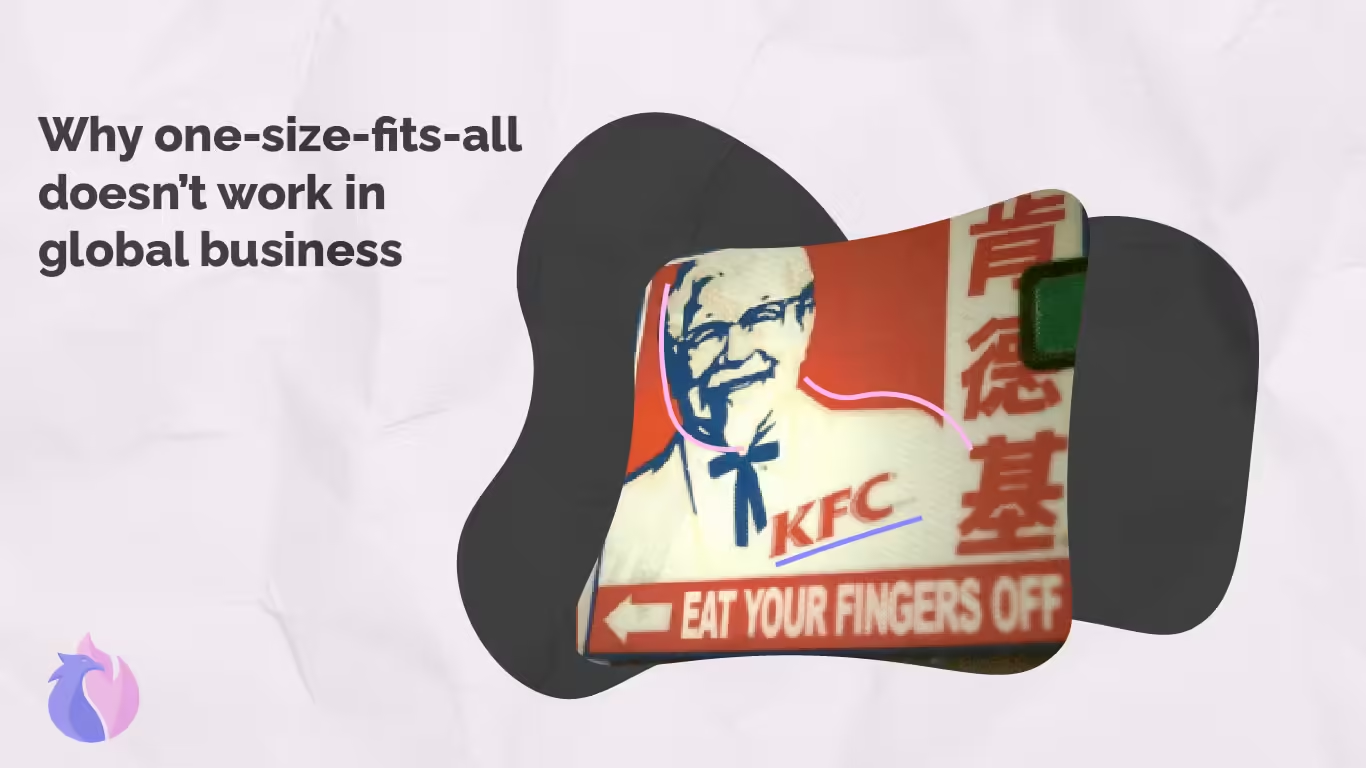
Expanding your business into international markets? That’s exciting, but here’s the thing: it’s not as simple as hitting “translate” on your website and calling it a day. A one-size-fits-all approach might seem quick and easy, but it can miss the mark completely when it comes to connecting with people in different cultures.
The problem with basic translations
Let’s be real: bad translations aren’t just funny, they can be downright embarrassing. Take this infamous classic example: when KFC launched in China, their iconic slogan, “Finger Lickin’ Good,” got mistranslated into “Eat your fingers off.” Yikes. 😳
This isn’t just about words; it’s about meaning, intent, and tone. When translations miss cultural nuances or use awkward phrases, your audience might feel confused, disconnected, or even offended. And no one’s sticking around to buy your product if your message doesn’t make sense.
Why culture matters
Every culture has its own way of communicating. What works in one place might totally flop in another.
For example:
Certain colors or symbols might be lucky in one culture and offensive in another.
Even something as small as a thumbs-up gesture is positive in some places but rude in others.
When you take the time to adapt your message to fit local customs, it shows that you understand and respect your audience. And that’s how you build trust, by making people feel seen, understood, and valued.
The solution? Hybrid translations
This is where hybrid translation services come in. They combine the speed of AI with the precision of human expertise, so your content is accurate, natural, and culturally on point.
Here’s why it works:
✅ Speed: AI handles the heavy lifting, so translations happen fast.
✅ Accuracy: Human translators polish the content to make sure it flows naturally.
✅ Cultural relevance: Humans understand the context and nuance that AI can’t pick up on.
With hybrid translations, your brand sounds human, not robotic. And more importantly, your audience gets the message the way you intended it.
Let’s wrap it up
Here’s the bottom line: if you’re serious about connecting with a global audience, basic translations just won’t cut it. You need to go beyond words and focus on meaning, tone, and cultural relevance.
Your message deserves to be understood everywhere, and hybrid translations make that happen.
Because it’s not just about speaking the same language; it’s about speaking the same culture.

Leave a Reply